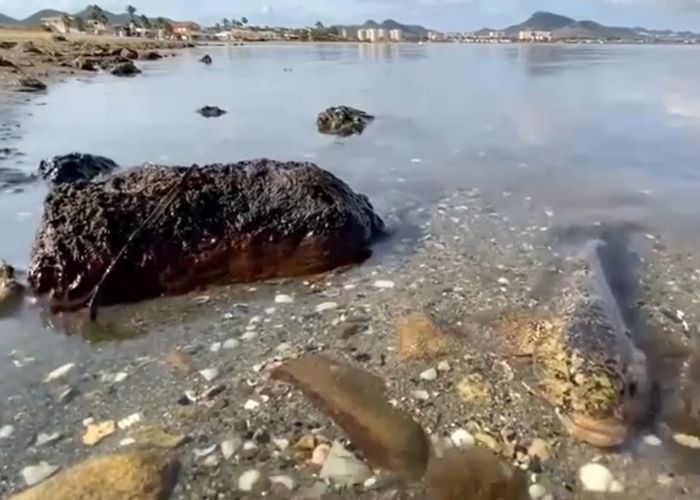SAN PEDRO DEL PINATAR – Since Tuesday, a symbolic plantation of hydroponic lettuce has been floating in the polluted waters of the inland sea Mar Menor in the south-eastern Spanish region of Murcia. With this, environmental activists want to denounce the high content of nitrates in Mar Menor.
It concerns a group of activists from Ecologistas and Acción. Campaign coordinator, Sara Acuña was interviewed by Cadena SER, onboard the sailing boat, Diosa Maat. Acuña, told the radio station that the same fertilisers that grow the phytoplankton algae and turn the water into an oxygen-deficient “green soup” are used for intensive farming in the region Campo de Cartagena.
Nutrients mainly agricultural origin
Ecologistas en Acción points out that scientific reports, such as those from the Spanish Institute of Oceanography last September, show that the nutrients in the salt lagoon are mainly of agricultural origin. And that they are used to produce fruit and vegetables in an intensive, industrial way. It is for this reason the region is known as the ‘vegetable garden of Europe’ together with the Almería province.
Polluted water
The organisation says that in order to cause eutrophication of the water, the import of nitrogen and phosphorus is necessary. This second chemical element does not enter through the water from the drainage pipes. But mainly through diffuse pollution phenomena and drainages, which are the main supply of sediments and phosphates in the lagoon. For example, pollutants that have accumulated in the basin for months or years are entrained.
The origin of the increase in nutrients in the Mar Menor that has a seriously disruptive effect on the ecosystem can be found not only in the intensive use of fertilisers and agrochemicals in the agricultural industry but also in cultivation techniques. According to Ecologistas en Acción, instead of the traditional cultivation of dry land, the current landscape attracts immense farms of tens or hundreds of hectares that are razed to the ground to quickly drain the rainwater.
Natural strip around Mar Menor
The environmental group emphasises the importance of restoring the structure and functions of the natural network of drainage and floodplains. Therefore, a proposal has been submitted to the Ministry for the Ecological Transition and the Demographic Challenge. This would be to create a strip of nature around the Mar Menor. It would concern 15,000 hectares, about 12% of the catchment area. Furthermore, it would limit agricultural and urban activity around the inland sea with the aim of contributing to the solution of the eutrophic crisis in which the lagoon is located.
The new nature reserve should be free of crops and buildings. This would then ensure the natural vegetation and its ecological functions are restored. So wetlands in flooded areas and undergrowth typical of such an environment will help to retain fertilisers and sediments.


